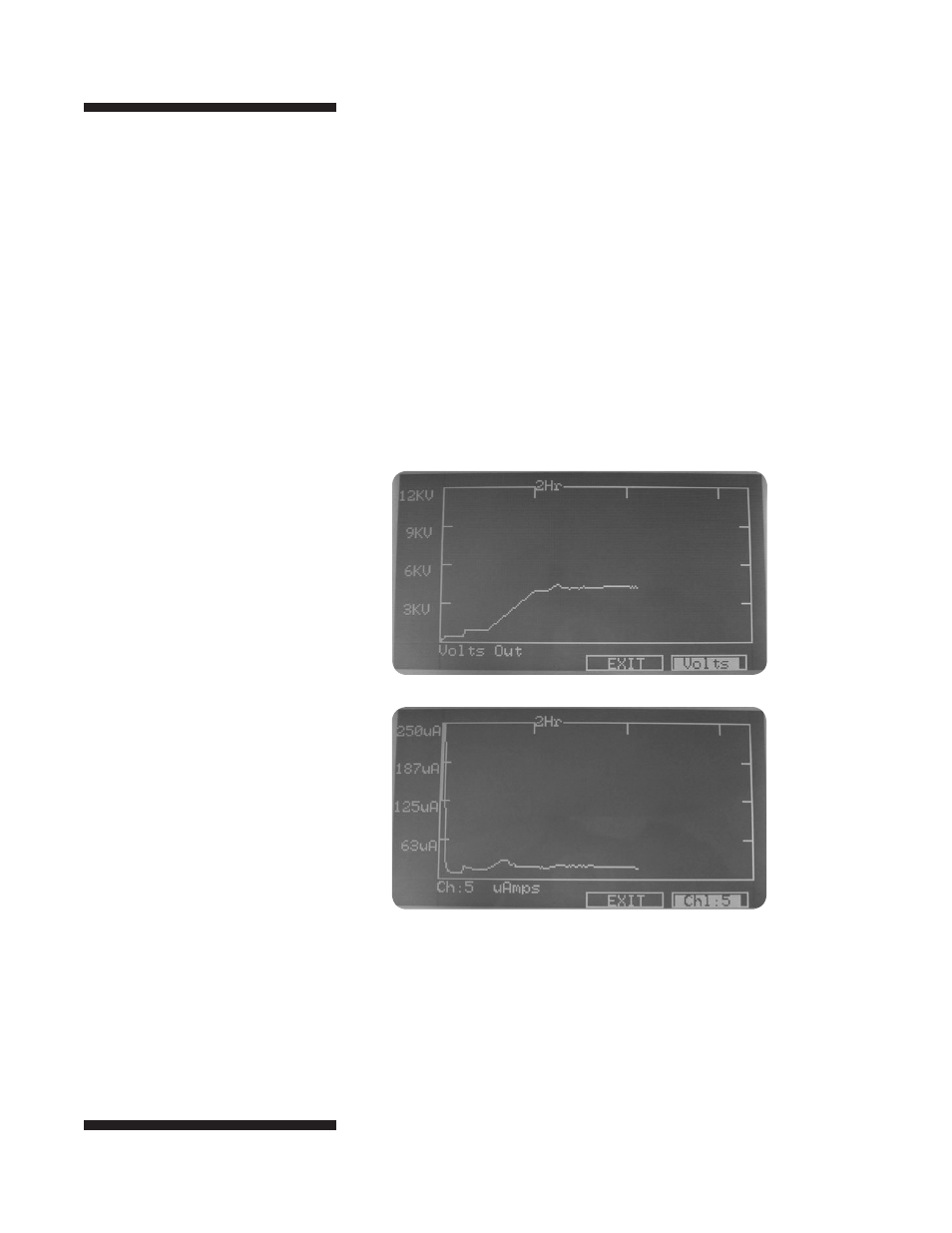Typical isoelectric focusing – Hoefer IEF100 User Manual
Page 39

• p33
Typical Isoelectric Focusing
The first step is typically set to low voltage to limit the current and
let the ions move to the end of the IPG strips without excessive
currents. If loading sample with a sample cup, an additional slow
step may be added to allow the sample to enter the IPG strip under
gentle conditions.
In the middle steps, the voltage ramps upwards to a plateau, and this
is where most of the focusing occurs. The current decreases down to a
minimum value. The graphs below show typical volt and μA profiles
(Fig. 35).
A final step has been added to the pre-programmed protocols to
hold the volt at 1000 V for an hour. This will keep the bands focused
in the IEF100 until the next step. Extend the length of this step
as necessary.
Note: Extra salt in the sample tends to
flatten the graphs (horizontally) and take
longer for the sample to focus.
Note: If there are problems with burning
IPG strips, set the current limit to
50 μA/strip to ensure safe focusing
conditions for the entire separation.
Note: The volt and μA are scaled and
graphed automatically.
Fig. 35. Typical volts and μA profiles.
